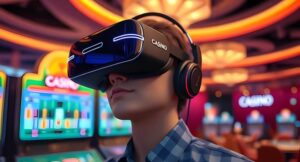The Impact of AI in the Metaverse on Global Change

The scene: You wake up at 6:30 a.m. You slip on your augmented-reality glasses with its stylish, minimalistic frames. You start to make your coffee when an alert pops up on the side of your coffee maker. The alert says you’re running out of espresso beans. “Would you like to add them to the grocery list?” it asks.
As you step outside and unlock the car, your glasses issue a reminder. The reminder says your car needs an oil change. The glasses offer to schedule the appointment for you. You have an opening on Thursday after lunch. You make the appointment. Then, you get in the car and drive to work.
These experiences are an intentionally banal depiction of how augmented reality (AR), virtual reality (VR) and mixed reality will impact life as we know it. And how artificial intelligence (AI) will shape our lives as extended reality (XR) experiences become more widely used.
Although the narrative sounds like something out of science fiction, it’s close to becoming a reality, according to researchers Alvin Graylin and Louis Rosenberg. Their book Our Next Reality: How the AI-Powered Metaverse Will Reshape the World is structured as a debate around the techno-utopian and dystopian potentials of XR technology and the role AI plays as these experiences continue to be developed and perfected.
For Graylin and Rosenberg, it’s not a matter of when we will be able to use the metaverse. It’s the cultural, financial and ethical implications of technologies that will almost certainly be in widespread use within the next decade.
If you’re a science-fiction fan, you’ve likely read Neal Stephenson’s novel Snow Crash. In the novel, users of the metaverse don virtual-reality goggles to experience a virtual world. They explore the metaverse as avatars—digital representations of themselves they can customize to appear however they like.
Stephenson’s satirical future was a novel idea 32 years ago when his book was published. But as companies continue to design VR and AR experiences for work and play, it’s apparent the metaverse is more than futuristic chatter among tech bros—it’s reality. Augmented reality is used to bring museum exhibitions to life, enhance online shopping experiences and even help physicians in real-time as they perform surgical procedures.
In Stephenson’s visualization of the metaverse, a subculture of individuals exist who remain connected to the metaverse. They wear portable devices all day. These individuals are nicknamed “gargoyles” because of their appearance while wearing these devices.
If that sounds far-fetched, just consider Microsoft’s HoloLens 2 or Apple’s Vision Pro headset.
While the Vision Pro is clunky and futuristic, there are other stylish and normal-looking forms of smart eyewear, like the Ray-Ban Meta glasses. Tech startup XPANCEO has even prototyped a set of smart contacts they plan to test in 2026.
Source link
#Metaverse #Changing #World






